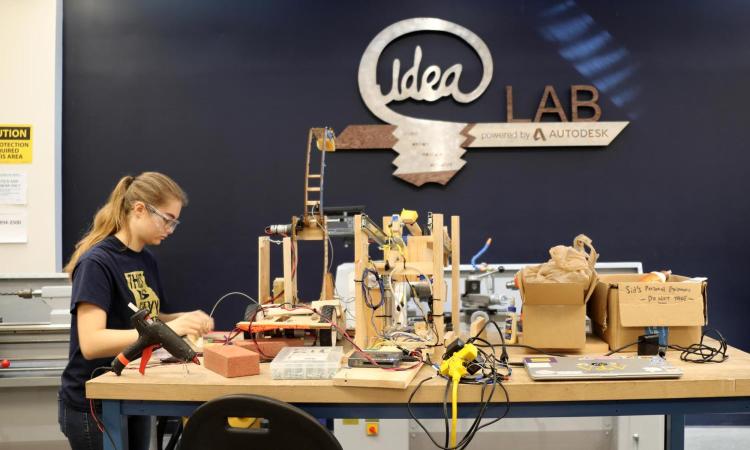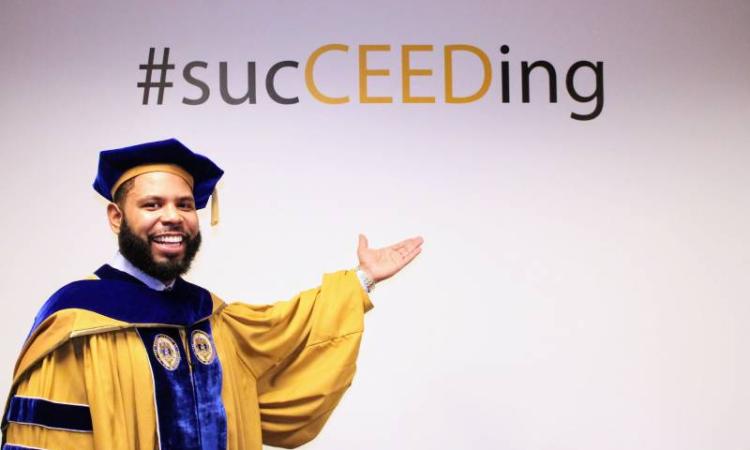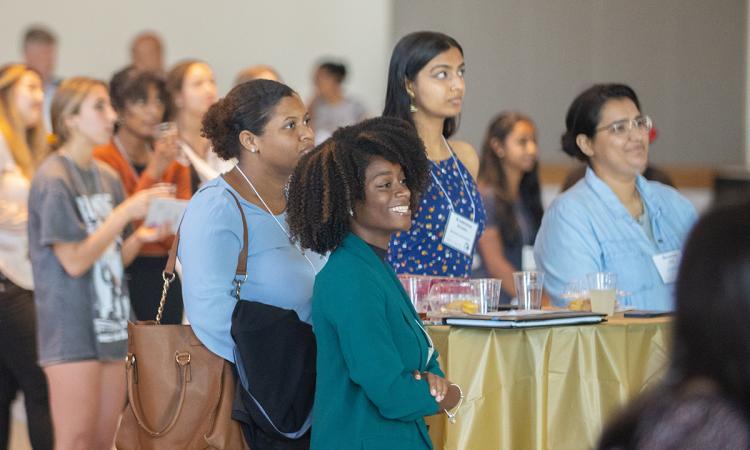The competition asks students to use engineering fundamentals to create solutions that promote equity and access in the College community.
When Siva Appana, Ian Kwuan, and Jathin Gadiparthi set out to make learning more accessible and interactive, the solution – virtual reality (VR) visualizations – felt initially elusive. The lightbulb moment for the three mechanical engineering students came on one of their late-night brainstorming sessions.
“As a visual learner, I convert any ideas into mental images, which aid significantly in my understanding,” Appana said. “Once I realized that I unconsciously do this, I realized that 3D animated visuals will help students better understand concepts.”
The team’s idea won the first-place prize in the College of Engineering’s annual Student Innovation Competition – Promoting Equity and Access (SICPEA), which asks students to propose a creative solution to a problem affecting marginalized populations on campus. Other teams won second and third place with projects that seek to improve students’ access to groceries and keep underrepresented minorities from abandoning engineering careers.
The competition is designed to build awareness around issues of equity and access among engineering students while improving the College community. The competition is coordinated by the College’s Diversity, Equity, and Inclusion (DEI) Council, and the top three teams win cash prizes.
“SICPEA remains an important spoke in our network of student innovation competitions because it brings students together to think about how we as a community can put into action Georgia Tech’s values of diversity, access, and well-being,” said Mark Losego, a member of the College’s DEI council who helps coordinate the competition and an associate professor in the School of Materials Science and Engineering.
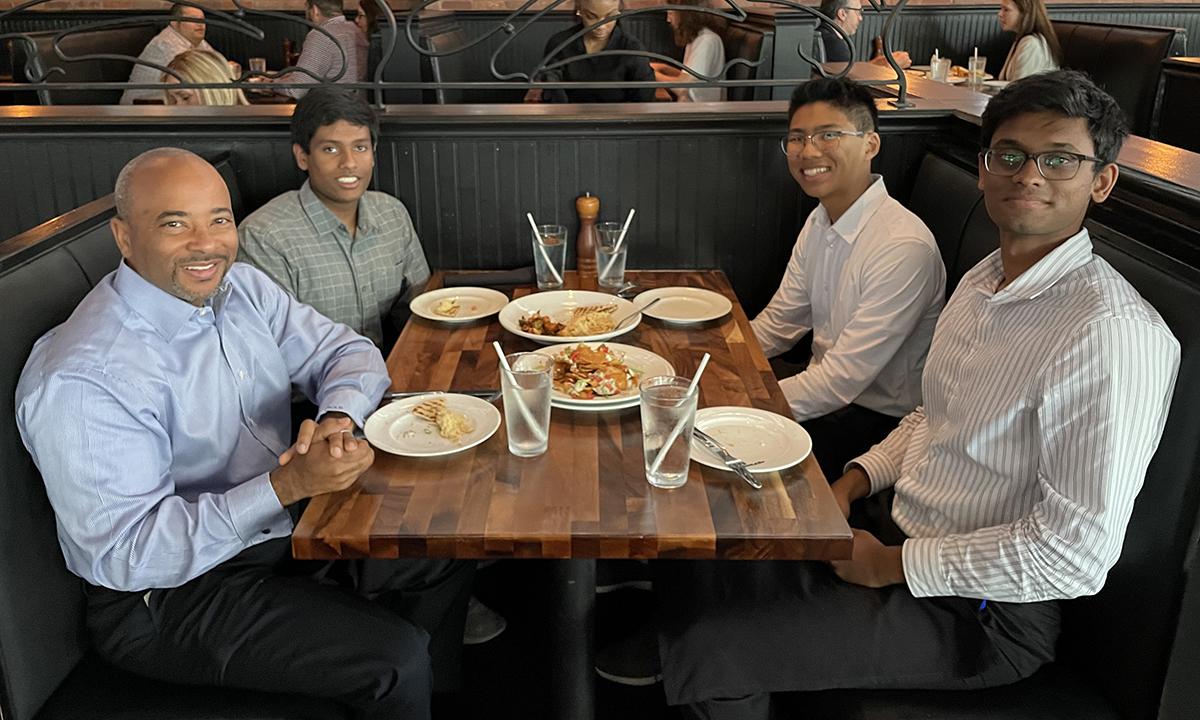
Dean Raheem Beyah discussed the winning idea from the 2023 Student Innovation Competition - Promoting Equity and Access over lunch with GT VizTools team members clockwise Siva Appana, Ian Kwuan, and Jathin Gadiparthi.
First Place: GT VizTools
“A picture is worth a thousand words,” Appana said. “Our proposal for GT VizTools expands visualization beyond whiteboards or textbooks to implement animations and interactivity, using libraries developed for VR headsets.”
The team proposed an open-source library of digital course content that could be accessed via VR headsets, which would be available for checkout at the Georgia Tech Library. Easy access to improved visualizations of course content could aid understanding and offer creative ways to prepare for exams, the team suggested.
“Especially in engineering and the sciences, visualization is important for helping students to comprehend and internalize topics they are learning in their classes,” Kwuan said. “We aimed to create an innovation that would add a layer of interactivity and realism to representations of many course topics.”
Gadiparthi said that interactivity would have helped him in classes like linear algebra, where 3D visualizations can represent concepts better than 2D.
“This is the tool that I wish I had,” he said. “By being a part of this project, I like to think I would be helping people in situations similar to mine.”
Appana, Kwuan, and Gadiparthi won $3,000 for the GT VizTools proposal and lunch with engineering Dean Raheem Beyah. Moving forward, the team hopes to begin prototyping course content and then starting a student organization focused on bringing GT VizTools to life.
“Planning out GT VizTools with my two friends has been a very positive group project experience,” Kwuan said. “What we have done so far in this competition certainly feels rewarding; we’ve had some fun moments working late through the night together on this, and I hope to continue with them on this innovation in the long run.”
(text and background only visible when logged in)
Second Place: GroceryJackets
(text and background only visible when logged in)
“Food insecurity is a huge issue on college campuses and correlates with lower GPA, attendance, and completion rates. When students are focused on how to afford their next meal, they are not able to put their full effort into academics.”
DEVASENA SITARAM
Third-year mechanical engineering student
Devasena Sitaram, Grace Marek, Nicole Sen, Priyali Bandla, and Shreya Terala focused on improving access to grocery stores, an issue they said heavily impacts low-income students and those with dietary restrictions. By making it easier for students to get to the store and then to prepare affordable meals, the team hopes to improve educational equity.
“Food insecurity is a huge issue on college campuses and correlates with lower GPA, attendance, and completion rates,” said Sitaram, a third-year mechanical engineering student. “When students are focused on how to afford their next meal, they are not able to put their full effort into academics.”
Team members surveyed students about food access and costs. Many of their respondents didn’t have access to a car and nearly half cited cost as an obstacle to getting groceries. They also looked at U.S. Department of Agriculture data, which classifies the campus neighborhood as a food desert since there’s only one grocery store within a mile. To improve access, the team proposed a rideshare app that would connect students with cars to those without to offer rides to nearby grocery stores.
“It was so amazing to see issues that my friends and I struggled with — exasperation at the lack of access to fresh nutritious foods that were affordable and impact our experience at Tech — inspire a potentially actionable solution,” said Bandla, a third-year industrial engineering student.
(text and background only visible when logged in)
Third Place: The Inclusive Interdisciplinary Innovators
Anastasia Schauer worked with Carnegie Mellon student August Kohls to dig into data about why underrepresented minorities (URMs) leave engineering fields to present ideas for retaining them.
The two Ph.D. students noted that the National Society of Black Engineers has reported seven in 10 Black engineering students leave the field before finishing their degrees compared to 50% for all races. Meanwhile, underrepresented groups also change fields after graduation, according to data from the National Center for Education Statistics. The center reported that Black, Hispanic, and Native American students account for 21% of science and engineering bachelor’s degree recipients yet just 11% of the workforce.
Through a survey of former engineers at various stages of their careers, Schauer and Kohls found that the key to increasing retention might be incorporating interdisciplinary studies into engineering, in the classroom and beyond. The team proposed several different means of doing this, including interdisciplinary internship and research opportunities, interdisciplinary projects starting in students’ first year, bachelor’s and master’s programs across fields, and more guest lecturers from other disciplines in engineering classrooms.
Schauer, a mechanical engineering Ph.D. student, said they’re just getting started with their work and will share their findings more broadly this summer.
“I’m excited that our work was accepted to be presented at a conference,” she said. “We’ll be sharing it at the American Society of Engineering Education conference at the end of June.”
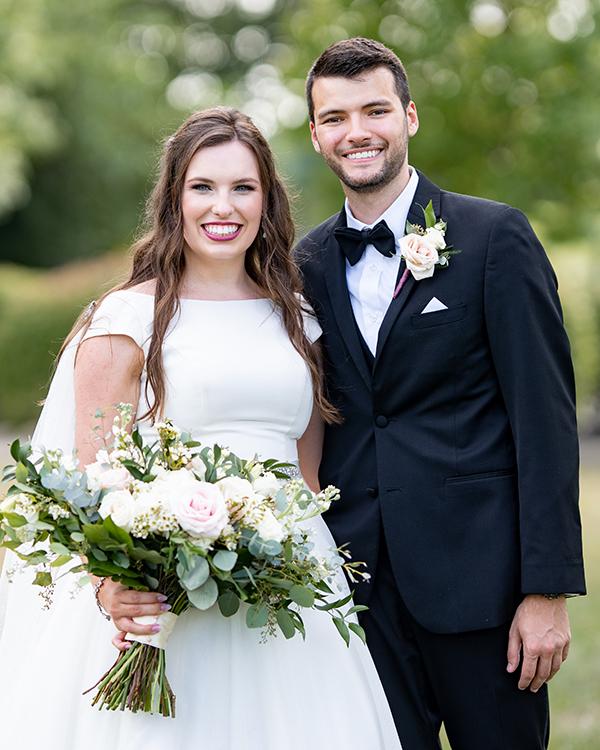
Anastasia Schauer and August Kohls at Schauer’s wedding. The pair — now siblings-in-law — had long wanted to write a paper together about engineering education, and the College’s innovation competition gave them the opportunity. (Photo Courtesy: Anastasia Schauer)
(text and background only visible when logged in)
Related
Team EPICS wins Student Innovation Competition – Promoting Equity & Access
Former teaching assistants worked to increase access for women in campus makerspaces in the inaugural Student Innovation Competition in 2022.
Center for Engineering Education and Diversity (CEED)
CEED collaborates with Georgia Tech offices and student organizations, alumni, national organizations, corporations, the K-12 community, and other universities to create and support a diversified engineering workforce.
(text and background only visible when logged in)
Diversity and Inclusivity in the College of Engineering
Georgia Tech is proud to be one of the most diverse universities in the world. However, we must do more.
